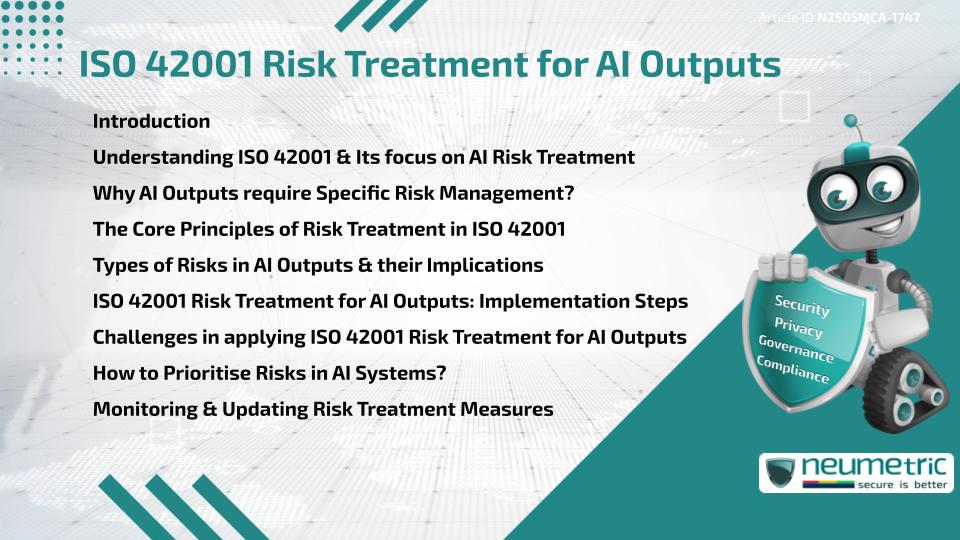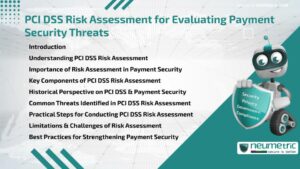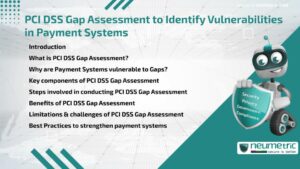Table of Contents
ToggleIntroduction
Artificial Intelligence [AI] systems are transforming Industries, but they also present unique Risks—especially in the outcomes they generate. Whether it is a loan denial, a Healthcare Recommendation or a Facial Recognition match, the consequences of flawed AI Outputs can be significant. This is where ISO 42001 Risk Treatment for AI Outputs becomes essential.
ISO 42001 is the first International Standard designed specifically to manage Risks in AI Systems. It helps Organisations identify, assess & treat Risks arising from AI behaviour, particularly in how outputs are generated & used. This article explores the Risk Treatment process under ISO 42001 with a focus on AI Outputs & offers a practical breakdown for effective implementation.
Understanding ISO 42001 & Its focus on AI Risk Treatment
ISO 42001 is a Governance Standard aimed at helping Organisations build trust in their AI Systems. While it addresses the full lifecycle of AI—from Design to Deployment—its most critical focus is on outputs, the direct results Users see & interact with.
In the context of Risk Management, Outputs are not just end results; they represent the intersection of Algorithms, Data & Decision-making. Risk Treatment under ISO 42001 ensures that these outputs are Fair, Accurate, Secure & Ethically sound.
Why AI Outputs require Specific Risk Management?
Unlike Traditional Software, AI Systems can produce unpredictable results. For example, an AI trained on Biased Data may deliver discriminatory results, even if the algorithm appears technically sound.
Some of the Risks tied specifically to AI Outputs include:
- Unintended Bias or Discrimination
- Loss of Transparency or Explainability
- Data Privacy Breaches
- Misuse or Misinterpretation of Outputs
- Safety issues in Physical Environments (such as: autonomous vehicles)
ISO 42001 Risk Treatment for AI Outputs mandates that Organisations treat these not just as Operational errors but as systemic issues requiring structured response plans.
The Core Principles of Risk Treatment in ISO 42001
Risk Treatment in ISO 42001 follows several foundational principles, ensuring consistency across AI Systems:
- Proportionality: Treatment must match the potential harm
- Accountability: Clear Ownership & Governance must exist
- Transparency: Explainability of the output must be ensured
- Adaptability: Continuous learning & Feedback Loops are vital
- Ethical alignment: Outcomes should respect Human values & Laws
These principles guide Organisations in designing Treatment Plans that are both Technical & Human-centric.
Types of Risks in AI Outputs & their Implications
The following are some key Risk categories addressed under ISO 42001 Risk Treatment for AI Outputs:
- Statistical Risks: Errors due to Insufficient or Skewed Data
- Security Risks: Outputs manipulated through Adversarial Attacks
- Compliance Risks: Breaches of Data Protection Laws or Regulations
- Operational Risks: Failures in high-stakes environments like Finance or Healthcare
- Reputational Risks: Brand Damage due to controversial decisions made by AI
Identifying these early allows for proactive mitigation rather than reactive damage control.
ISO 42001 Risk Treatment for AI Outputs: Implementation Steps
Here is a simplified walkthrough of how to apply ISO 42001 Risk Treatment for AI Outputs:
- Risk Identification: Catalogue all possible Output-related Risks.
- Risk Assessment: Evaluate Likelihood & Impact of each.
- Risk prioritisation: Rank Risks to allocate Resources effectively.
- Treatment Planning: Define Technical, Procedural or Organisational Controls.
- Action Execution: Implement the defined measures.
- Review & Monitoring: Continuously check for emerging Risks or Control failures.
Each step must be Repeatable & Documented, aligning with your broader Information Security Management System [ISMS].
Challenges in applying ISO 42001 Risk Treatment for AI Outputs
Despite its clarity, implementation comes with challenges:
- Complexity of AI Models: Especially with Black-box Systems
- Lack of Historical Data: For new AI use cases
- Limited explainability: Makes Risk tracing difficult
- Dynamic Outputs: AI behaviour may evolve post-deployment
- Cross-functional collaboration Gaps: Between Developers, Legal Teams & Risk Managers
Recognising these limits helps refine your Risk Treatment strategy & manage Stakeholder expectations.
How to Prioritise Risks in AI Systems?
Not all Risks are equal. ISO 42001 encourages prioritisation based on:
- Severity of impact on Human Rights or Safety
- Regulatory Exposure
- Stakeholder sensitivity
- Likelihood of Occurrence
A simple Risk Matrix can help visualise priorities & focus attention where it is most needed.
Monitoring & Updating Risk Treatment Measures
AI Outputs are not static. As Systems learn & adapt, so should your Risk Treatment strategy.
Effective monitoring includes:
- Periodic Audits of Outputs
- Real-time alerts for Anomalies
- Feedback Loops from Users & Stakeholders
- Review of Regulatory updates & Compliance shifts
ISO 42001 insists on treating Risk Management as a living process.
Role of Documentation in ISO 42001 Risk Treatment for AI Outputs
Documentation provides evidence of Compliance & helps in Audits or Incident investigations.
Documents to maintain include:
- Risk Registers
- Treatment Plans
- Testing & Validation results
- Change Logs
- Stakeholder Feedback Reports
Strong documentation strengthens Trust & provides Transparency across Departments & Partners.
Takeaways
- ISO 42001 helps manage Risks specific to AI Outputs
- Risk Treatment must align with Ethical, Legal & Operational goals
- Outputs need more scrutiny than traditional software due to their impact
- Prioritisation, Monitoring & Documentation are key
- Implementation requires cross-functional collaboration & repeatable processes
FAQ
What is the main goal of ISO 42001 Risk Treatment for AI Outputs?
The main goal is to identify & manage Risks in AI-generated outcomes to ensure they are ethical, accurate & safe for Users.
How does ISO 42001 differ from other Risk Frameworks?
Unlike general standards, ISO 42001 is focused specifically on the unique characteristics & Risks of AI Systems & their Outputs.
What types of AI Output Risks are considered under ISO 42001?
These include Bias, Explainability issues, Compliance violations, Security Threats & Operational errors.
Is ISO 42001 only applicable to Large Enterprises?
No, it is scalable. Startups & SMEs can also implement ISO 42001 Risk Treatment for AI Outputs based on their Risk Exposure.
How often should Risk Treatment Plans be reviewed?
ISO 42001 recommends periodic reviews, especially when AI Systems learn or are updated.
What Tools help in managing AI Output Risks?
Tools include Risk Registers, Monitoring Dashboards, Bias Detection Algorithms & Documentation Templates.
Who is responsible for managing AI Output Risks?
It should be a joint responsibility between Developers, Compliance Officers, Legal Teams & Risk Managers.
Do Regulators recognise ISO 42001 for AI Governance?
While it is not mandatory, ISO 42001 is internationally recognised & often used as a benchmark for responsible AI Practices.
Need help?
Neumetric provides organisations the necessary help to achieve their Cybersecurity, Compliance, Governance, Privacy, Certifications & Pentesting goals.
Organisations & Businesses, specifically those which provide SaaS & AI Solutions, usually need a Cybersecurity Partner for meeting & maintaining the ongoing Security & Privacy needs & requirements of their Clients & Customers.
SOC 2, ISO 27001, ISO 42001, NIST, HIPAA, HECVAT, EU GDPR are some of the Frameworks that are served by Fusion – a centralised, automated, AI-enabled SaaS Solution created & managed by Neumetric.
Reach out to us!





